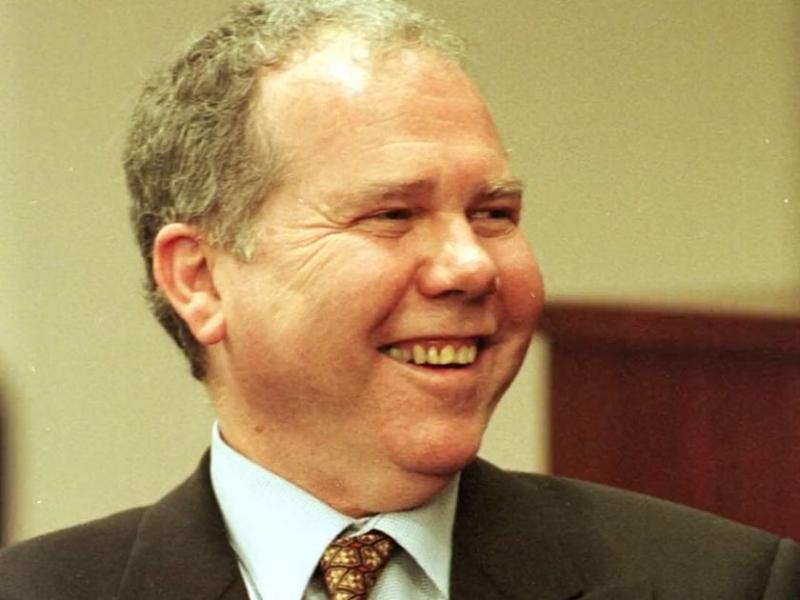Ted Binion, also known as Lonnie Theodore Binion, has a connection to both the glitzy Las Vegas gambling scene and the seedy underworld of crime.
On November 28, 1943, he was born. Binion was a multifaceted character whose life ended tragically on September 17, 1998; he was more than just a gaming boss.
Let’s examine the complicated circumstances surrounding his murder while also examining his early years, professional endeavors, and internal issues.
Early life of Binion
The adventure of Ted Binion, who is the son of famed casino magnate Benny Binion, began in Dallas, Texas.
Ted moved to Las Vegas in 1946 with his older brother, Jack, and three sisters, fully participating in his father’s casino world at Binion’s Horseshoe.
Early on, he gave him a unique perspective on gambling that served as the basis for his future involvement in the family business.
Ted spent the summers at the family’s hideaway working alongside ranch hands, getting a taste of the hard life of a Montana cattle ranch.
His exposure to both the opulent casino culture and the simple ranch life would later influence his personality and interests.
The rise and fall of a casino heir
After overcome legal issues, Benny Binion reclaimed ownership of Binion’s Horseshoe in 1964.
Due to a criminal conviction, Benny’s gaming license was revoked, so he turned the business on to his two young kids, Jack and Ted.
They took on managerial responsibilities for the casino’s operations at ages 23 and 21, respectively.
Ted, in particular, embraced his position as casino manager and became as the public face of the poker tournaments and nightlife at the Horseshoe.
He was well-liked by socialites and gamblers alike thanks to his endearing personality and love of the high life.
Ted’s life, however, took a nasty turn in the middle of the 1980s when he was detained on drug trafficking charges and connected to Herbert “Fat Herbie” Blitzstein, a notorious figure in organized crime.
His live-in girlfriend Sandy Murphy was suspected of helping him launder money by the Nevada Gaming Control Board.
His estranged wife and daughter left because of these charges, which impacted his personal life.
Secrets and struggles
Ted Binion’s preference for narcotics, such as marijuana, Xanax, and the heroin sold on the streets, was evident in his personal life.
Additionally, his friendship with Sandy Murphy sparked questions and concerns.
His gaming license was temporarily suspended in 1996, preventing him from holding any management positions and exposing him to recurring drug tests.
He portrayed a gloomy image of a man divided between his family legacy and personal issues through his drug battles and run-ins with the authorities.
Ted Binion made a strange investment in a 12-foot-deep vault in the Nevada desert after being barred from the casino.
A treasure in silver bullion, priceless coins, and millions of dollars’ worth of Horseshoe Casino chips were kept in this subterranean bunker.
Later, the vault would prove important in determining how he died.
Ted Binion murder and aftermath
Ted Binion was discovered dead on a mattress in his estate home in Las Vegas on September 17, 1998.
An autopsy found a fatal cocktail of Xanax and heroin in his system, and empty prescription bottles were around.
The circumstances of his death raised questions about the initial determination that his death was a suicide.
One wondered if a heroin addict would use the drug in that manner given its unique presence.
When his death was reclassified as a homicide by the Clark County Coroner’s office in May 1999, more questions were raised.
Sandy Murphy and her partner Rick Tabish were blamed for the murder by Las Vegas homicide investigators who believed there had been foul play.
There was evidence that suggested the death scene might have been faked. A complex web of deceit, intrigue, and greed would be revealed in the subsequent trial.
Murder trial and re-trial
Following a highly publicized trial that riveted the nation’s attention, Murphy and Tabish were found guilty of killing Binion in May 2000.
Tabish was given a 25-year sentence to life in jail, while Murphy received a 22-year sentence.
Their convictions were nevertheless overturned in 2003 by the Nevada Supreme Court.
which exposed errors in the jury instructions and biased testimony.
The conclusion of the subsequent retrial in 2004 was different. Although Murphy and Tabish were found not guilty of the more serious charges of murder and grand theft, they were.
Tabish eventually regained his freedom in 2010 after his sentence was also changed to include parole.
Media coverage of a captivating Ted Binion murder story
The murder case sparked a variety of media coverage and captivated the public’s attention.
The events are described in depth in real-life crime novels like “Death in the Desert” by Cathy Scott and “An Early Grave” by Gary C. King.
The case received episodes on television shows like CSI and 48 Hours Mystery, while films like “Who Wants to Kill a Millionaire” dissected the details of the crime.
A fictional dramatization called “The Defenders” was inspired by the trial, and the lawsuit also made it into popular culture.
A dark legacy
In the history of real crime, the story of Ted Binion’s murder continues to be a horrific chapter.
The tale of a casino heir caught in a web of addiction, love, and betrayal presents a somber portrait of the sometimes unspoken truths that lie underneath Las Vegas’ glitz.
Even if the legal disputes may be over, Ted Binion’s death’s mystery still intrigues.

